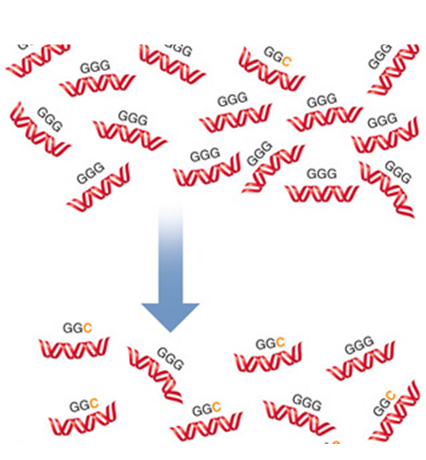organ system
What will be an ideal response?
a higher level of organization that consists of functionally related organs
You might also like to view...
What is this phenomenon called and what affect does this mutation have on
GGG and GGC are codons for the amino acid, glycine. A mutation caused the insertion of a cytosine in place of the guanine during DNA replication. Over many generations the DNA changes so that the frequency of GGC is similar to that of GGG.

A. directional selection; that has resulted in genetic uniformity in the species.
B. a bottleneck effect; decreases the number alleles in the population.
C. stabilizing selection; that reduced genetic diversity within the species.
D. adaptive variation; resulting in reduced genetic diversity in females because the GGC coded for bright feather color instead of the mottled brown feather color coded for by GGG.
E. neutral variation; the change in genetic code does not cause a change in phenotype therefore there is no change in reproductive success. This mutation then does not affect the population.
Siberian tigers and grizzly bears became endangered for __________ reason(s);
____________________.
a. different; tigers encountered disease and bears were overhunted b. different; bears encountered disease and tigers were overhunted c. the same; both encountered disease d. the same; both were overhunted
According to cell theory, ____
a. all organisms are multicellular b. all cells come from preexisting cells c. DNA is the structural and functional unit of life d. all cells are approximately the same size e. proteins are the genetic material of cells
Which of the following situations is NOT a way in which a baby acquires normal microbiota?
A) The baby acquires the residential microbiota in the colon after the first meal. B) Staphylococcus epidermidis is transferred from the hospital staff to the newborn after delivery. C) microbes cross the placenta during pregnancy. D) microorganisms grow in the respiratory tract after the baby's first breath. E) microbes enter the nose and mouth when the baby is in the birth canal.